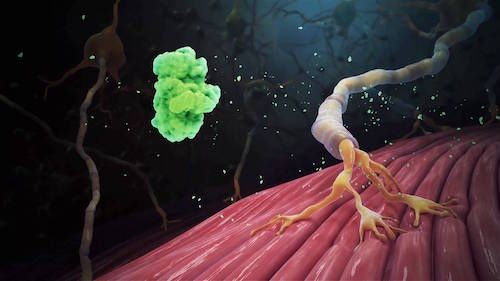Botox Alternative Considered for Pain Therapy Treatment
Neurotoxin EB-001's fast treatment start-up and shorter duration could make for a different focal pain reliever.

A drug’s early success into glabellar frown line studies is leading to its clinical consideration for pain management and therapy.
Botulinum neurotoxin serotype E (EB-001), a potential alternative to botulinum neurotoxin serotype A (BOTOX) for frown line treatment, will be using Phase II trial data to set dosing for Phase II pain therapy indication studies in 2 models.
The drug’s particularity from common pain medication is its short onset and brief duration. Susan Abushakra, MD, chief medical officer and co-founder of drug developer Bonti, noted how post-surgery therapy medication often takes about a week to begin working in patients.
“Usually the pain is at worst in the first 2 to 3 days, so you want a drug that will work early, but not a muscle relaxation drug that will last long,” Abushakra said. “It could cause muscle atrophy if it’s too long.”
According to Bonti, EB-0001 duration of effect is just 4 weeks, versus 3 to 4 months when treated with BOTOX.
“All the drugs on the market have a somewhat similar profile of starting to work after one week, and lasting for a few months,” Abushakra said.
The neurotoxin drug works by focally blocking neuromuscular transmission, Abushakra said, showing the capability to create muscle relaxation and immobilization 24 hours into treatment. Rather than disillusion the body from the sensation of pain, it works to alleviate it.
“In muscle spasms, it treats not just pain, but the underlying cause of pain,” Abushakra said.
Though the treatment’s designation in the market is currently closer to aesthetic use — as indicated in the Phase II frown line study — Bonti projects its utility in hospital, ambulatory, emergency, and general clinician settings for pain therapy.
Abushakra additionally praised the neurotoxin as an efficient, non-addictive alternative to opioid medication, noting EB-001 “fits the profile” of recent proposals from federal leaders focused on addressing the addiction medicine epidemic.
“If we can decrease the amount of opioids prescribed in post-op (surgery), that’s an additional benefit,” Abushakra said. “If you cut down opioid use, there’s less potential for addiction.”
According to the Bonti website, 2 pain models for Phase II therapeutic studies to establish dosing began in this quarter.
Photo courtesy of Bonti.
Related Coverage
Opioid Threat Grows to National Emergency, Study Shows Mortality Rates Are Even Worse
PCPs Can Effectively Manage HCV Treatment with DAAs
HCV Drug Receives Australian Subsidy as Nation Aims for Zero Infections